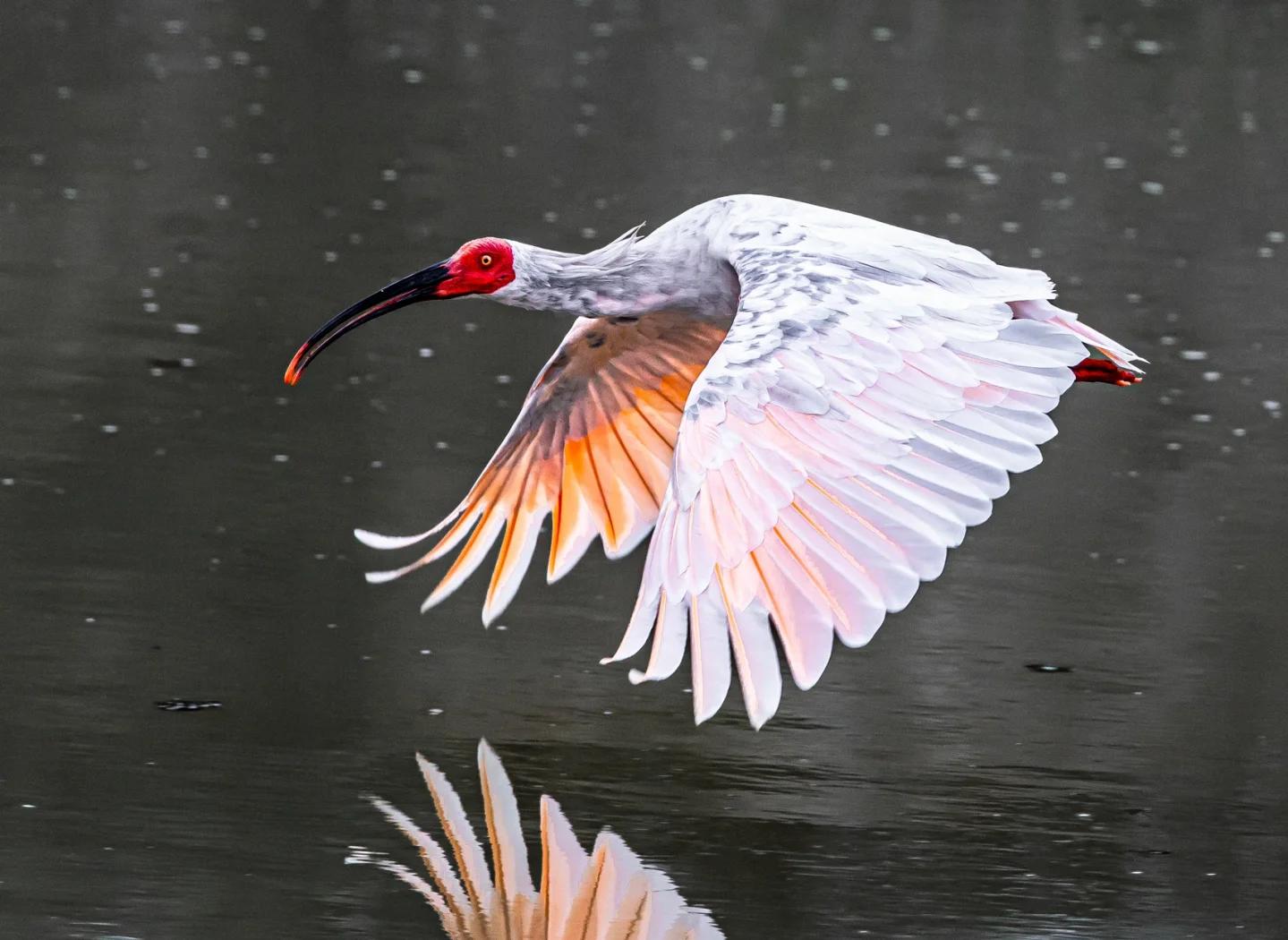The Crested Ibis known as the “Oriental gem” is a rare and precious species in the world. The Crested Ibis is a larger bird with its body length up to 80cm and weight about 1.8 kg. Its head is partially bare, showing its red skin, and it has a dense crest of white plumes on the nape, a long down-curved beak and white plumages mixed with pink. The Crested Ibis is regarded as an “auspicious bird” and is considered as the symbol of good luck and happiness by Chinese people.

In history, the Crested Ibis was widely distributed in East Asia, including China, Japan, North Korea and Russia (Former Soviet Union). The species declined rapidly during the late 19th century and mid-20th century due to the change of the environment caused by human activities, such as the decrease of the rice fields, the wide applications of fertilizers and pesticides, the deforestation of woodlands used for nesting and over-hunting. The population of the Crested Ibis decreased so rapidly that it was on the verge of extinction.
In May 1981, after years of investigation, Chinese ornithologists discovered a small group of seven wild Crested Ibises in Yangxian County, Hanzhong City of Shaanxi Province, which was the only population of wild Crested Ibis in the world. Since then, measures have been taken for the protection and scientific research of the Crested Ibis and noticeable achievements have been made, especially in the field of captive breeding. In 1989, the world's first captive bred Crested Ibis was born. In 1990, the Shaanxi Crested Ibis Nature Reserve was established. By 1995, there had been about 35 Crested Ibises in the wild and 25 ones in captivity, making it possible to save this rare species from extinction. At present, the total population of the Crested Ibis in China has raised to about 2,000.
